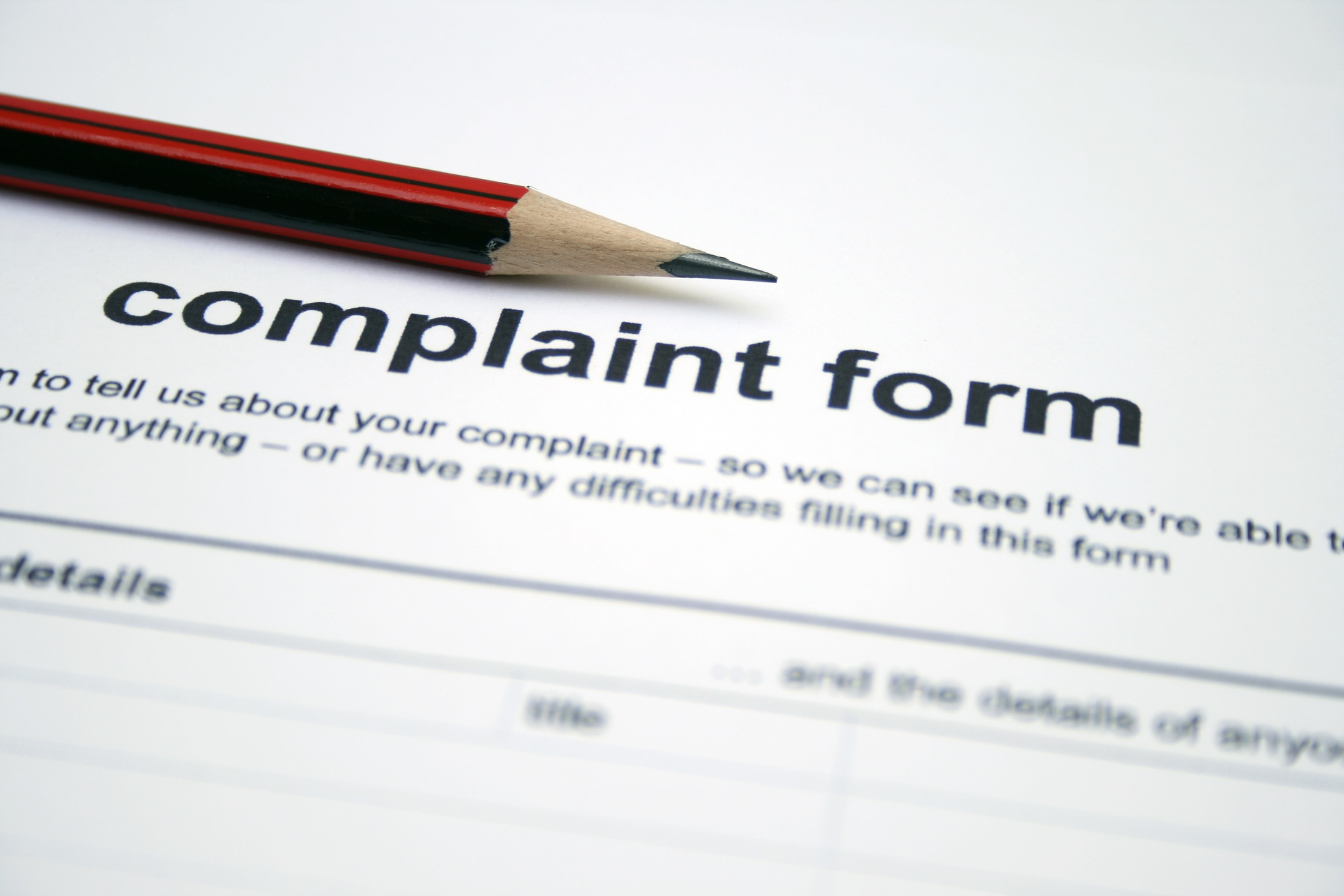 Image Source: alexskopje; “Complaint form.”, 2024. Accessed via Standard License.
Image Source: alexskopje; “Complaint form.”, 2024. Accessed via Standard License.The ability to make an effective complaint can lead to positive outcomes while maintaining professional relationships. Complaining can be uncomfortable, but it’s a necessary skill for resolving issues and improving situations. The key to success lies in communication that is both assertive and respectful.
Know the Situation and Your Goal for Resolving It
Before lodging a complaint, take a step back and evaluate the situation objectively. Is this issue significant enough to warrant a complaint? Are your expectations reasonable? Do you have all the necessary facts?
Taking time to reflect helps ensure your complaint is justified and well-founded. It also allows you to approach the situation with a clear mind, rather than acting on impulse or emotion.
Also think about and clarify your objective. Do you seek a refund, a replacement, an apology, or a change in behavior? Having a clear goal will help you focus your communication and increase the likelihood of a positive outcome.
Identify the Appropriate Recipient and Method of Communication
Direct your complaint to the person or department best equipped to address your concerns. This might be a customer service representative for product-related issues, a manager or supervisor for service-related problems, or human resources for workplace concerns. Addressing your complaint to the right person increases the likelihood of a swift and satisfactory resolution.
Select an appropriate method of communication for your complaint:
- A casual conversation might suffice for minor issues
- In-person conversations for sensitive or complex issues
- Phone calls for urgent matters
- Emails for detailed explanations or when you need to track your communications
- Official complaint forms when available
Be Timely, Specific, and Clear
Address the issue promptly. While it’s fresh in your mind, details will be clearer. However, if you are feeling emotional or overwhelmed, take a pause to cool down before reaching out.
Begin your complaint with a positive or neutral statement. This sets a constructive tone for the conversation and makes the recipient more receptive to your message. For example:
- “I’ve been a loyal customer for many years and have always enjoyed your products.”
- “I appreciate the opportunity to discuss my concerns about the recent project.”
While it’s natural to feel frustrated or angry, avoid letting emotions dictate the tone of your complaint. Stick to the facts and present your case calmly and objectively. Using “I” statements can help maintain a respectful tone. For instance, instead of saying, “You made a mistake,” say, “I was disappointed when…”
Avoid emotional language or exaggeration. Keep your focus on:
- What happened
- When it occurred
- Who was involved
- How it impacted you
Be specific and provide relevant details without overwhelming the recipient with unnecessary information. Avoid resorting to accusations or generalizations. The more detailed your complaint, the easier it is for the recipient to understand and address the issue.
Clearly articulate how the situation has affected you to help gain understanding of the significance of your complaint.
- “Due to the delayed delivery, I missed an important deadline.”
- “The defective product caused me additional expenses for repairs.”
Explaining the impact demonstrates that your complaint is not trivial and requires attention.
Suggest a Solution
Offer potential solutions or suggestions for improvement. This demonstrates that you’re not just venting but genuinely interested in finding a resolution. Your suggestion might be:
- How the product could be improved
- A refund or replacement for a defective product
- Additional training or support in a work environment
- Compensation for poor service
Be open to alternative solutions that may be more in line with company policies and procedures. But having a suggestion ready demonstrates your willingness to work towards a positive outcome.
Engage Empathy and a Respectful Tone
Approach the situation with empathy and avoid blaming or accusing individuals. Focus on the issue, not the person. A polite and respectful demeanor can go a long way. Even if you’re frustrated, strive to maintain a positive tone throughout your communication. Begin and end your complaint with a courteous statement.
Throughout your complaint, maintain a respectful and professional tone. Avoid using:
- Sarcasm or condescension
- Threats or ultimatums
- Personal attacks or insults
Remember, the person receiving your complaint may not be directly responsible for the issue. Treating them with respect increases the likelihood of a positive resolution. When your complaint is addressed, express genuine appreciation for the time and effort taken to resolve the issue. This reinforces positive behavior and leaves the door open for future interactions.
Be Patient and Persistent
Understand that a resolution may not be immediate. Be patient, but also persistent in following up if feel you need to. Keep records of all communications, including:
- Dates and times of conversations
- Names of people you spoke with
- Any promises or commitments made
If your initial complaint doesn’t yield satisfactory results, know when and how to escalate the issue. Escalation should be used when other avenues have been exhausted. You might consider speaking to a higher-level manager, contacting corporate headquarters, or reaching out to regulatory bodies or consumer protection agencies, if necessary.
Learn from the Experience
Every complaint is an opportunity to learn and grow. Reflect on the situation and identify areas where you could improve your communication or problem-solving skills. Remember, the goal of a complaint is to find a resolution, not to cause conflict.
Mastering the skill of making an effective complaint will be valuable for you. By approaching your concerns with clarity, respect, and a solution-oriented mindset, you increase the chances of a positive outcome. The objective is not just to voice dissatisfaction, but to initiate positive change. Whether you’re addressing a faulty product, subpar service, or a workplace issue, these techniques will help you navigate the complaint process with grace and courtesy.
You may also enjoy reading . . .


